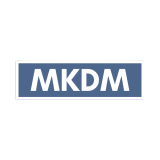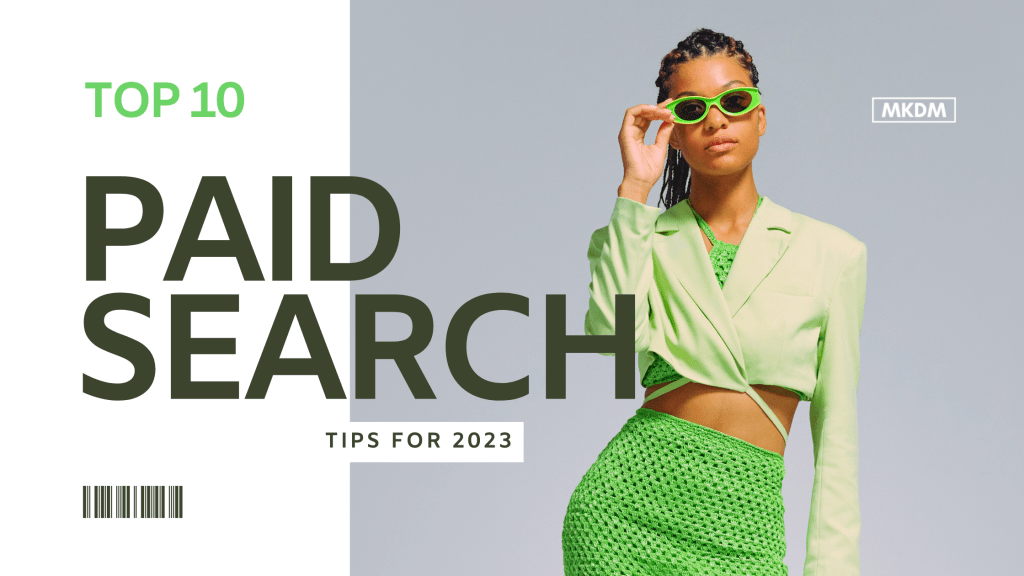Now more than ever, businesses need to rethink strategic digital advertising. Compared to other methods, Google Ads and other types of pay-per-click (PPC) advertising provide better customer acquisition results.
Because digital advertising performs so well, it needs to be an integral part of your business growth strategy. For many companies, that involves expanding digital advertising campaigns and spending. Even when businesses are looking for ways to reduce costs.
More important than increasing advertising spending, however, is making sure you are optimizing your budget. For most business owners, that means trying to reach potential customers through new methods. And trying new approaches to convince and convert your target market.
Saving money while increasing advertising results may sound impossible. But with the right digital strategy and our team of experts at Matt Kundo Digital Marketing you can start getting more return on your investment in digital advertising.
Here are our top ten best tips for high-performing paid search in 2023.
1. Double-Down on YouTube Video Advertising
Video ads are nothing new. But there are now more advanced tools to help businesses reach their target market. Impressions are great, but conversions are what your business needs to grow. And there are some exciting new ways to do that with video ads.
YouTube In-Feed Ads
Creating content on your own YouTube channel was never the most cost-effective way to dive into video advertising. Unless you have a large number of YouTube subscribers, boosting ads on YouTube was the only option.
Now there is the option of creating In-Feed Ads. That allows you to place your video, featuring products or services beside popular YouTube content. Think of the types of videos your customers are likely to watch (and subscribe to). Now your ads can be displaced in YouTube search results, YouTube app Home feeds, and YouTube Watch Next (video previews).
The YouTube In-Feed Ads require a thumbnail image, headline, and up to two lines of text. When the viewer clicks on the thumbnail, they are instantly taken to a YouTube watch page for your ad, which will autoplay your video.
YouTube and Google Bumper Machine
Using artificial intelligence (AI) Google launched the Bumper Machine tool. If you have a video that is shorter than 90 seconds, it can generate a series of shorter (bumper) ads that you can share on the YouTube network.
The AI technology doesn’t just transform your YouTube video ad; it optimizes it using years of research data and after analyzing millions of advertisements. Then it provides you with (3) or more clips that are tooled to get the attention of your prospective customers.
2. Third and Fourth Touch Remarketing
With conventional sales methods, you would inform the customer, and then conduct a series of follow-up communications. A salesperson might call a lead three or four times, and offer more information and an incentive. And that one-to-one sales method worked.
In digital advertising, remarketing emulates that process. One of the biggest mistakes businesses make is sending one communication, or ad campaign, expecting conversions. If you boost your ad, will they come?
The problem is advertising saturation. Some experts estimate that the average American is exposed to over 5,000 advertisements every day. Now that every business is invested in digital advertising, reaching your customers with online ads is easy. Getting them to engage and make a purchase decision, however, is a lot harder.
Remarketing means developing a campaign using multiple or omnichannel communications. This kind of campaign will contact your prospective customer in a variety of ways. It can include drip marketing email campaigns, text messaging, and social media ads. It is effective when it is all working in conjunction to get your customer to take action.
3. Programmatic Marketing More Accessible
Have you ever clicked on an advertisement, and now you see that business everywhere? Not just when you are browsing on search engines either. Programmatic advertising sends your content for digital out-of-home (DOOH) placement. That means online, streaming apps, display ads, television, and even voice advertisements.
One example of programmatic advertising in action is YouTube. It’s no accident that you are being served videos that align with your interests. Analytics can help define where your customers are engaging online (at home, or even outside of the home or smartphone). Currently, programmatic campaigns make up more than 80% of advertising in the United States. Both for B2B and B2C businesses. Add programmatic marketing to your strategy and allow your ads to follow your customers between platforms.
4. Customizing Advertising for Mobile Devices
Advertisements seen on a desktop, laptop, or tablet are easy to design because they are less intricate than mobile ads. What appeals on a larger screen doesn’t work as well when your prospective customer is using their smartphone.
Optimizing advertising for mobile devices is a two-part strategy. First, your website has to scale to smartphone viewing. How does your site look on a smartphone? What kind of user experience (UX) do customers get when they click on an advertisement and redirect to your landing pages?
There are many Google tools designed to help businesses optimize for mobile engagement. Some of the critical changes can include:
- Implementing CSS media queries to allow your website to scale according to the viewer’s device (mobile, desktop, tablet, and laptop orientations).
- Display video content that is suitable (and compatible) with mobile devices. And place all mobile view video content on auto mute, so your audience can discreetly watch, or choose to turn on sound if they prefer.
- Eliminate large images from the mobile display, and remove the overlap.
- Adjust to low resolution for fast loading on mobile screens.
Native ads have to be tailored specifically for mobile viewing. This type of advertising looks like sponsored content, or blog articles that are placed on high-traffic websites. Imagery, headlines, and two short sentences can be very effective at crowdsourcing new customers.
5. Moving Away from Third-Party to First-Party Cookies
For decades, one of the most powerful tools in the arsenal of digital advertising was third-party cookies. Google had been talking about removing third-party cookies entirely since 2019. In 2024, the tracking tool will no longer be available on Google.
Privacy Sandbox is the initiative that will help protect user privacy. Good for consumers, but not so good for advertisers. The rules just changed (again) and businesses need to start getting ready now for this important privacy initiative and new web standards.
First-party cookies will still be permitted. That means, when someone visits your business website, you will still be able to collect analytics data from each visit. But businesses will not be able to use third-party cookies, which can track consumer activities on all websites they visit.
For example, a consumer clicks on a mountain bike on Amazon.com. Third-party cookies would allow you to identify that a customer is interested in that particular product. And then target the consumer with your mountain bike product. That ability is going away. This means it is time to adopt new tools and strategies that will replace the advantage that third-party cookie analytics provided advertisers.
6. Protect Your Budget from Click Fraud
You pay for your ads to be delivered to real customers. You have spent both time and money creating advertisements and targeting them to your ideal customer. What if you found out that as much as 50% or more of your advertising budget is being wasted on click fraud?
The idea is alarming, but it happens every day. Click fraud surpassed online credit card fraud in 2021 when it reached $41 billion in lost global advertising value. The intention is malicious. It is the act of clicking on a digital ad to damage a business or competitor.
- Deplete the advertiser’s budget.
- Damage the performance or reach of an advertisement.
- Steal the cost of that click and claim the expenditure (ad fraud).
Before you imagine your competitors clicking relentlessly on your ads, consider that the process is highly automated. Bots are scripted software that can click on an advertisement the same way a human can. Driving up your costs, and stifling your results.
The problem is so prevalent that no business should be advertising online without having a click fraud solution implemented. Matt Kundo Digital Marketing can assist by selecting some software options to protect your business and advertising budget.
7. Experiment with Competitor Audience Targeting
Unlike click fraud (which is illegal) targeting your competitors’ audience is permitted. And for now, while third-party cookies analytical data is available, you can allocate some of your budget to target consumers that have engaged with your competitor(s) online.
Inside the Google, Analytics dashboard is tools that allow you to find those prospective customers. And create custom audiences for them. You can enter the information into detailed targeting, and add competitor business names to the search bar.
Don’t feel too bad about this offensive maneuver. Chances are your competitors are already running Google Ads targeting your customers on social media, and anyone who has visited your website. It is a common and legal practice.
8. Artificial Intelligence (AI) Assisted Campaigns
You are probably reading about ChatGPT as a revolutionary new artificial intelligence tool. The AI was trained with access to over 570 GB of data from websites, research articles, and other online content. And over 300 billion words were “fed” to ChatGPT during the tools development.
It started as a powerful chatbot service you could add to a website, to engage with customers. Now advertisers are looking at optimizing ad content with ChatGPT. Since artificial intelligence has talked to an infinite number of people online, it excels at generating advertising copy tailored to specific audiences.
When designing remarketing campaigns, some AI software can also assist with predictive analytics. Based on behavioral data, the next generation of advertisements will be even more effective with AI tools.
9. Increasing Social Media PPC to Counteract Ad Blocking
Right now, most ad-blocking software is not free. It must be paid for, which is why many consumers are not currently using it. How do you reach consumers who do have ad-blocking tools enabled on their browsers? By diversifying where you place your advertisements.
Think outside the box when it comes to finding your target audience. Microsoft for example, may not be the first platform you think of when it comes to PPC. But Bing Ads serve over 700 million people on the Microsoft Search Network. And an additional 296 million people on their native advertising platform.
Do you know about syndicated content? Platforms like Outbrain and Taboola allow you to create campaigns around articles or blog posts on your website. With the same targeting features as other PPC networks, your blog can be featured as “suggested reading” on major high-traffic websites.
Amazon also offers pay-per-click services, with cost per click ranging from With less competition from other advertisers on alternate platforms, you could see better results and conversions. Talk to us about creating a diversified digital advertising strategy.
10. Create a Voice Search Friendly Catalog of Products and Services
When you are searching for a product or service, do you head to Google and type in a search query? Or do you conduct a voice search on your smartphone instead? For example, “Hey Google, where is the nearest steakhouse?”.
Voice search is faster, easier, and more accurate. Not to mention Google will provide directions through Google Maps, reviews, and more information to help you find the business you are looking for.
If you have an e-commerce site, voice search keywords should be optimized for every product description. And for service-focused businesses, each landing page should have them too. Because the majority of your customers are using voice search to find your products.
Get better results from your investment in pay-per-click advertising. It starts with an expert strategy from our team at Matt Kundo Digital Marketing. Contact us today to schedule a consultation, and learn more about our advertising services.

